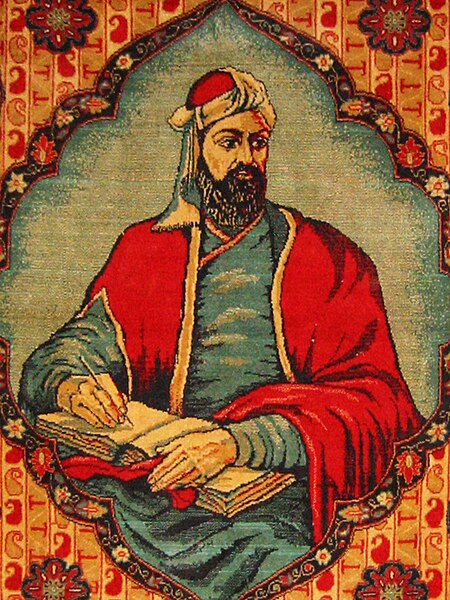Layla and Majnun is an old story of Arab origin, about the 7th-century Arabic poet Qays ibn al-Mulawwah and his lover Layla bint Mahdi.
A miniature of Nizami's narrative poem. Layla and Majnun meet for the last time before their deaths. Both have fainted and Majnun's elderly messenger attempts to revive Layla while wild animals protect the pair from unwelcome intruders. Late 16th-century illustration.
A Mughal miniature of Amir Khusro's version; Walters Art Museum
Jabal Al-Toubad, the hill where the story of Qays and Layla is said to have been witnessed
Majnun in the wilderness
Nizami Ganjavi, Nizami Ganje'i, Nizami, or Nezāmi, whose formal name was Jamal ad-Dīn Abū Muḥammad Ilyās ibn-Yūsuf ibn-Zakkī, was a 12th-century Muslim poet. Nizami is considered the greatest romantic epic poet in Persian literature, who brought a colloquial and realistic style to the Persian epic. His heritage is widely appreciated in Afghanistan, Republic of Azerbaijan, Iran, the Kurdistan region and Tajikistan.
Rug depiction of Nizami Ganjavi (1939). Ganja Museum, Republic of Azerbaijan.
Nizami Ganjavi at shah's reception. Miniature. 1570. Museum of History of Azerbaijan
Khosrow Parviz discovers Shirin bathing in a pool. Nezami's poems in a Persian miniature, created in ca. 1550 in Shiraz, Persia. Collection of Freer Gallery of Art
Atabeg of Azerbaijan Qizil Arslan welcomes Nizami








